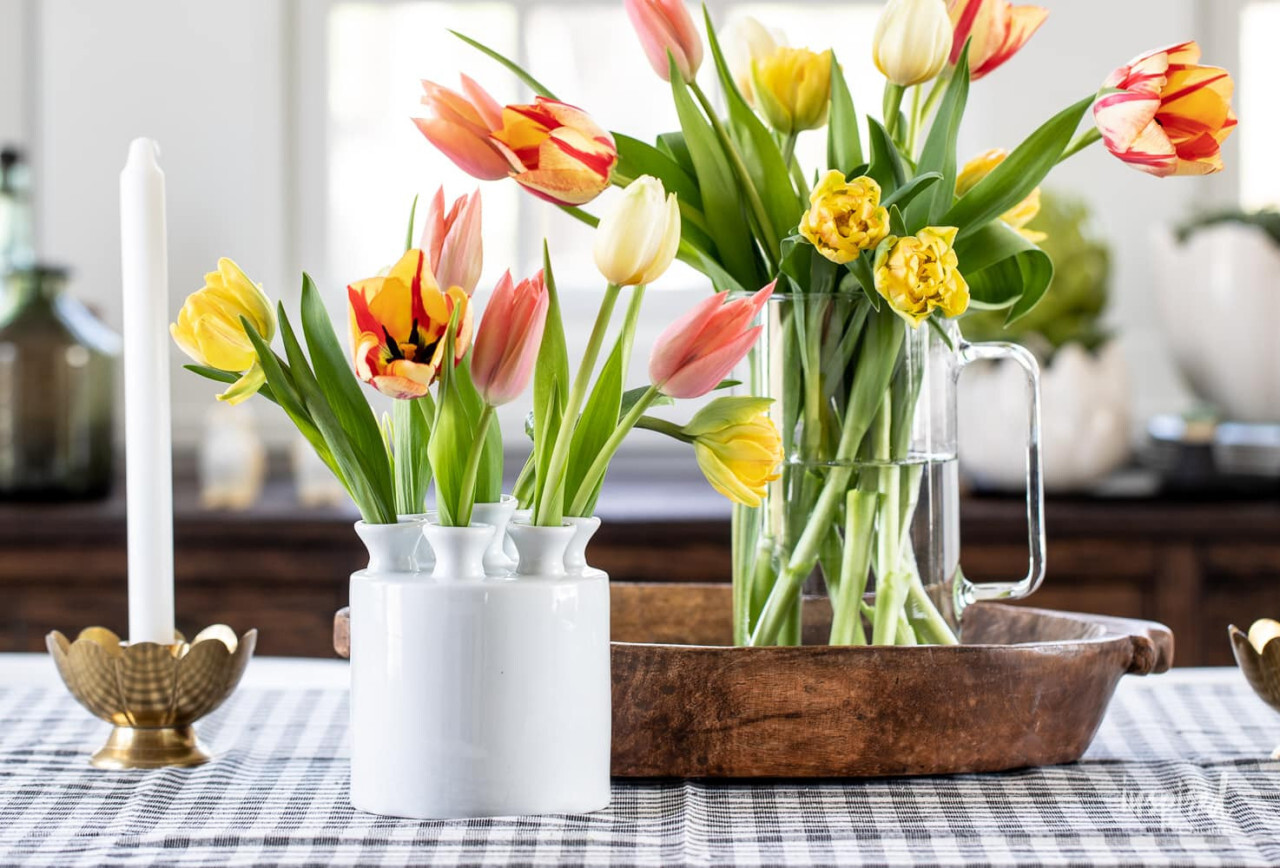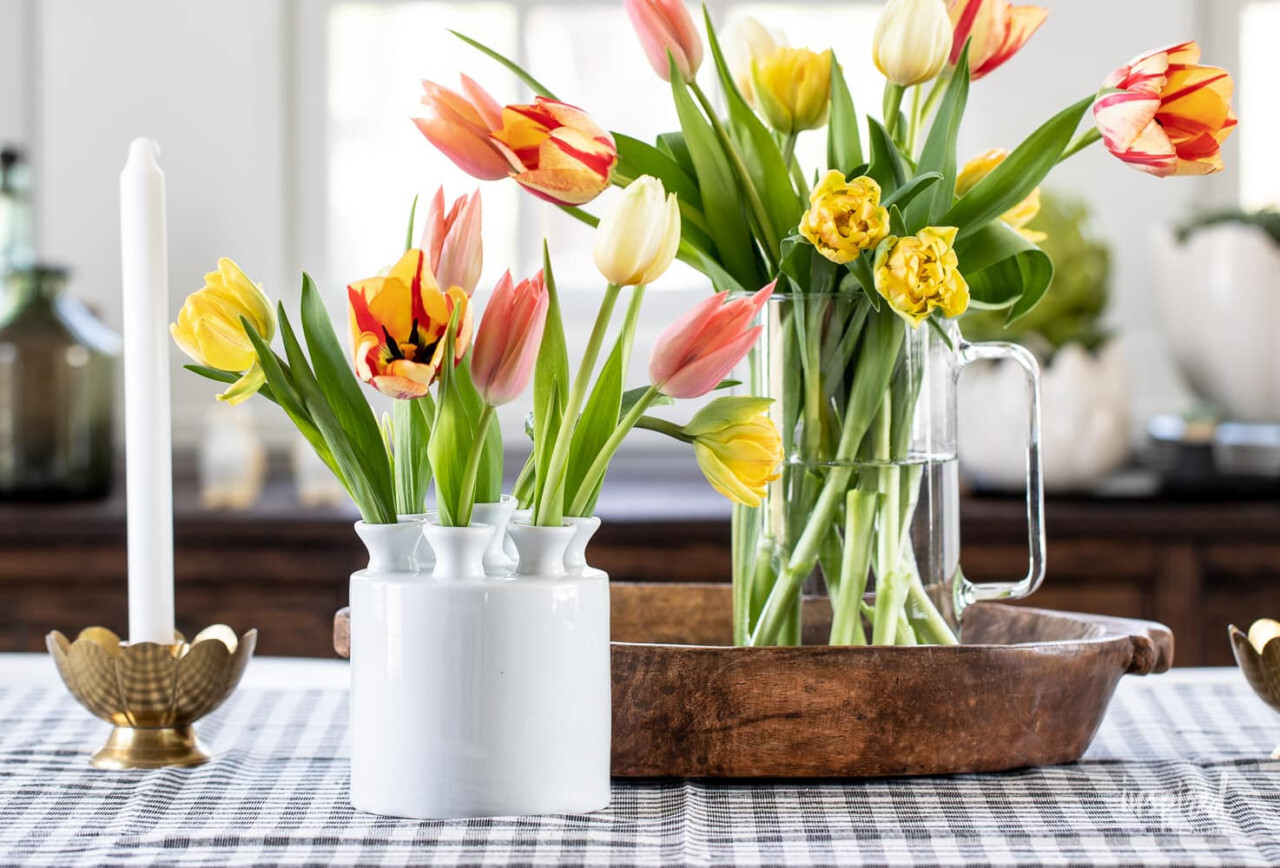Tips & tricks: how to clean vases
Written by Annette O'Shea On 15 januari 2024

A clean vase ensures that your bouquet of flowers stays beautiful longer. Often a stubborn deposit remains on the inside of the vase, which is difficult to remove. Especially when this vase has graceful shapes, with corners that are difficult to reach with a brush or sponge. That's why we've listed a number of tips to make cleaning a vase a piece of cake.

How to clean cloudy vases
Anyone who loves fresh flowers in their home knows it: that stubborn deposit that remains on the inside of the vase. The layer of water that the flowers have been in leaves an almost slimy substance behind when you pour the water out. It can become quite stuck and it will then be quite a job to clean your vase. However, it is important that you clean the vase properly. Otherwise, the dirt will accumulate on the inside of the vase and this will not benefit the quality of the water, and therefore the nutrition of the bouquet of flowers. So if you want to enjoy your fresh bouquet of flowers for longer, properly cleaning vases is essential. In addition, the remaining dirt can start to stink, which causes a constant unpleasant odor in the house. This problem is the biggest with glass vases. With glass vases, not only do the flowers suffer from the dirt that remains, but it also becomes very difficult to keep your glass vase sparkling clean. The dirt that remains causes the glass vase to become dull and it is no longer attractive to place it in a prominent place in the house. Fortunately, you do not have this problem with our ceramic and porcelain vases.
Tips for cleaning vases
There are a few useful tips and tricks that will make cleaning vases not such a tedious task. A handy way to remove deposits in a vase is to dissolve a tablet of denture cleaner in water. You then pour this mixture into the vase and all you have to do is leave the vase overnight. The next day you empty the vase again, rinse it and you should have a sparkling clean vase in your hands. If you don't have any denture cleaner available, you can try the same trick with a dollop of toothpaste in warm water. This method of cleaning vases is also ideal for vases with narrow openings that you cannot fit with your hand, such as the various spouts of the tulip vases. For example, our three-piece tulip vase consists of three small water containers, each with several narrow openings, which can make it difficult to clean the tulip vase. With this method, you simply pour the solvent water into all three water containers, leave it overnight and rinse it thoroughly again the next day.

Clean glass vases with cleaning vinegar
Another way to clean glass vases is to use cleaning vinegar. A well-known and popular cleaning product when you want to get something really spotless. This method works well, but it is not completely without risks. Pour hot water into the glass vase and add two tablespoons of vinegar. The vase should be approximately one-third full of water. Please note, because not every glass vase can withstand the impact of hot water. You don't want your vase to crack, so be careful. Fortunately, you do not have this problem with ceramic and porcelain vases that have already been fired at very high temperatures and can therefore withstand quite a beating. Also add a drop of dish soap to the water and vinegar mix and finally add a handful of dry, uncooked rice to provide friction. Let the mixture circulate well through the vase and if all goes well, all deposits will dissolve. Finally, all you have to do is pour out the water and rinse with clean water. Check carefully that no rice remains, especially if you have a vase with corners and edges on the inside. If you have a vase with a wide opening that you can easily reach with your hand, you can also put a little vinegar on kitchen paper and rub the dirty edges vigorously. Make sure that you do not push too hard so that the glass does not crack. This is not a problem with a ceramic vase, and you can scrub as hard as you want.
Clean vases with dishwashing liquid
Cleaning a glass vase with dish soap and warm water can also be a good option. Add a drop of bleach for an extra strong effect. You can now simply brush away the deposits with a soft sponge or brush. Although this cleaning method works well, it only works on vases where you can easily reach the dirt with your hands. If you have a vase with a rounded belly but a slender neck, or a tulip vase with multiple spouts, you will not benefit much from this trick. If you want to clean a vase with a difficult shape, it is best to dissolve a dishwasher tablet in warm water and let the vase soak in it overnight. The next day, remove the vase from the water, rinse it well with clean water and the vase is ready for the next bouquet of flowers.

Clean vases with baking soda
Cleaning smelly vases with baking soda is perhaps the easiest method there is. This white powerhouse substance often removes the most stubborn deposits and is known for its purifying effect. It is not without reason that it is added to everything these days, from toothpaste to toilet cleaner! Baking soda is therefore also an ideal and cheap product for cleaning vases. Glass and crystal vases in particular become sparkling clean with baking soda and it also counteracts unpleasant odors that can be caused by the deposits in flower vases. All you have to do is add a little baking soda to the vase, add hot water (again, be careful when pouring hot water into a glass or crystal vase) and let it soak for an hour. Then you pour the vase and you can simply rinse it or let it run in the dishwasher for a while.
Cleaning crystal vases
Cleaning crystal vases requires a little more care than glass or ceramic vases. It is best to always clean a crystal vase by hand. If this is not possible due to the stubborn deposits or the shape of the crystal vase, use pure white vinegar. If this is not strong enough, add a little more (salad) oil until you have a ratio of approximately one part oil and two parts white vinegar. Now carefully rub away the deposit. Another nature-friendly way to clean a crystal vase is to use orange peels. Fill the vase halfway with water, then add small pieces of orange peel and shake the mixture around in the vase. Do not clean crystal vases in the dishwasher or with detergent and be careful when using hot water. High temperatures and detergents can damage the crystal. Vinegar, soda and denture cleaner may be used to clean crystal vases.

Tips for cleaning tulip vases
We see that ceramic vases have many advantages when it comes to keeping them clean compared to glass and crystal vases. Ceramic vases can withstand high temperatures, making them easy to clean with hot water or in the dishwasher. They also tolerate strong cleaning agents better than glass vases and a major advantage is that ceramic vases remain beautiful on the outside, while glass vases run the risk of to become dull or scratched. However, cleaning tulip vases is a challenge in itself. The tulip vase is characterized by narrow openings, making it difficult to clean the inside of the vase. Fortunately, our tulip vases are made of extremely strong ceramic, so you can use plenty of hot water and cleaning agents such as a mixture of water with denture cleaner, vinegar or baking soda work very well. Fill the tulip vase with a mixture of your choice, let it soak overnight and then rinse the vase with clean water. You can also use a special cleaning brush for bottles. This narrow brush can easily enter through the spouts and thus wipe the deposits from the walls. Another advantage of ceramic vases is that the surface is not very large. This means that the material absorbs little dirt and thanks to the glaze there is an extra protective layer over it, which means that the dirt becomes less stuck.














